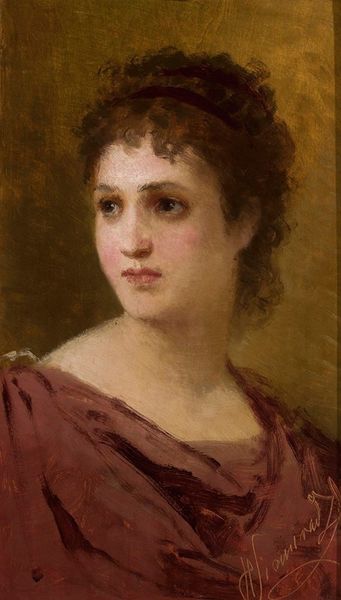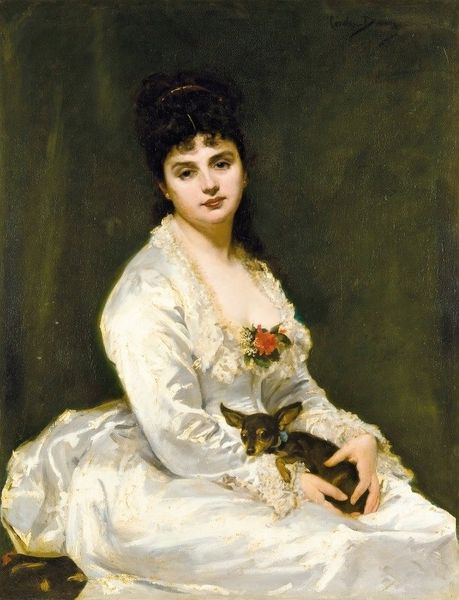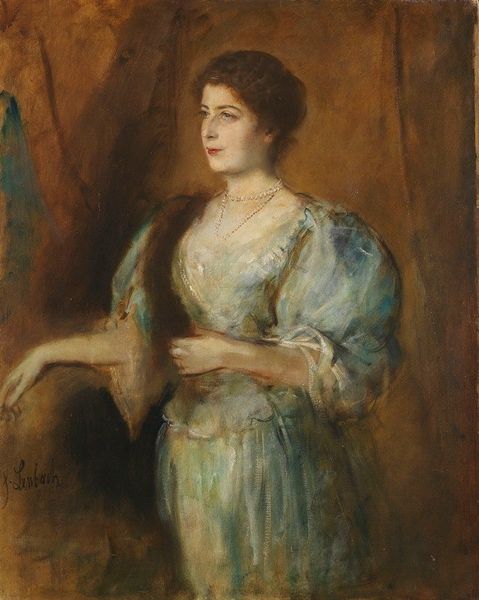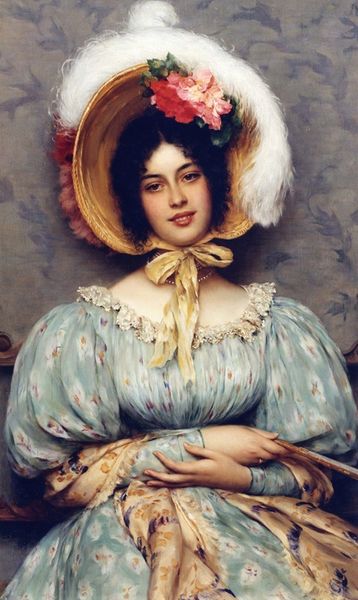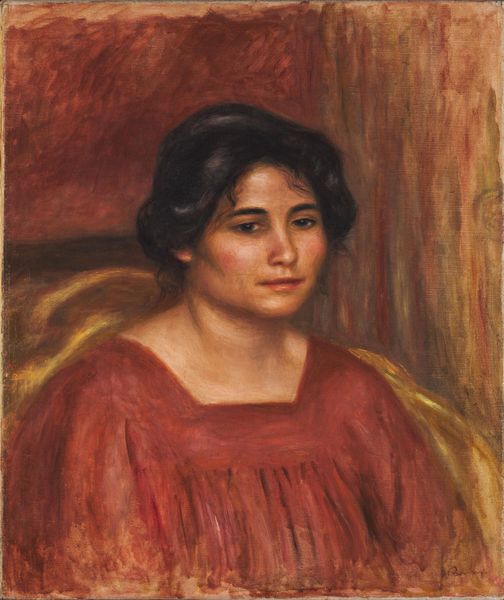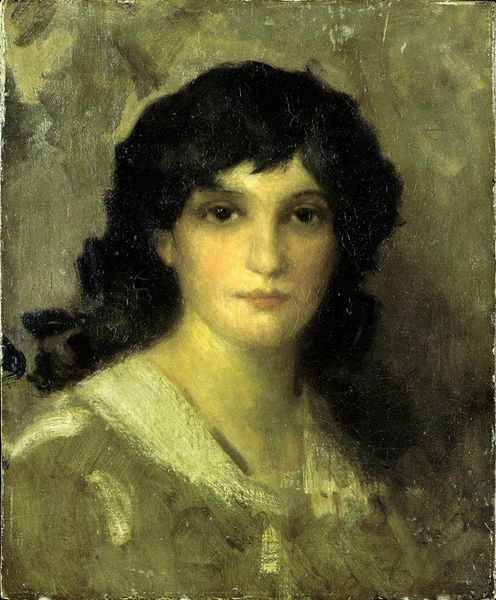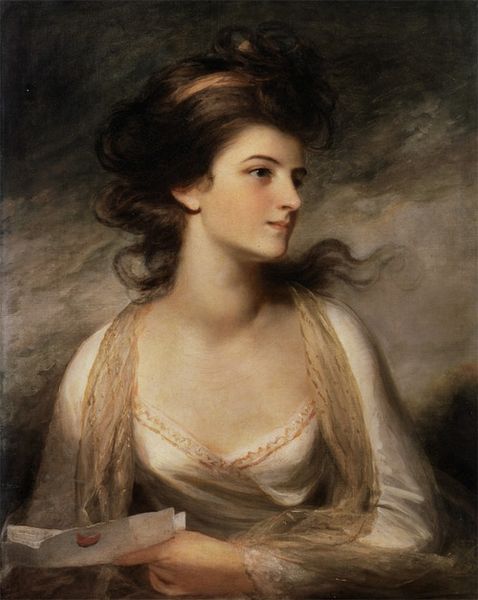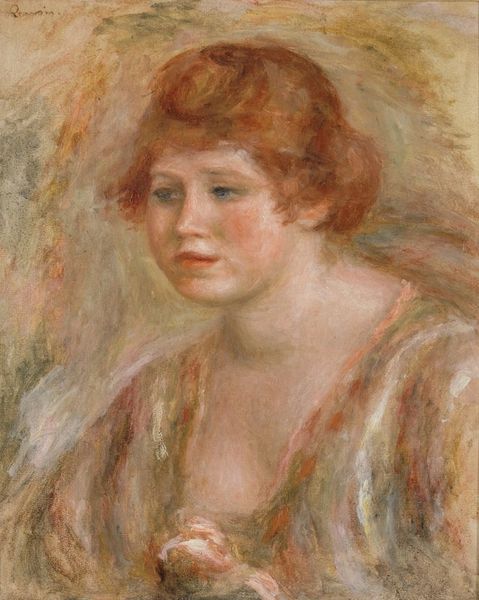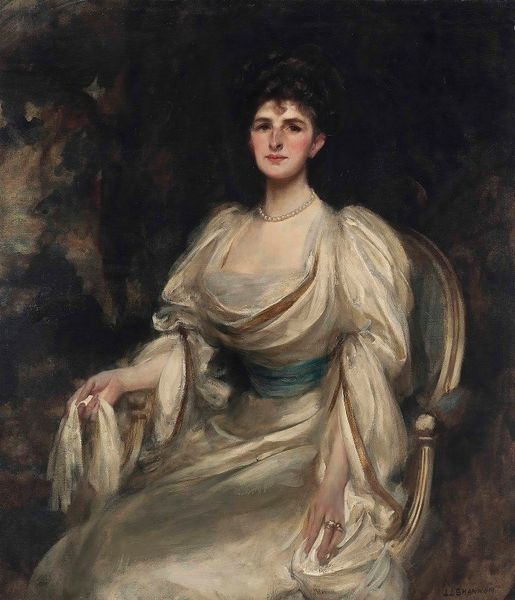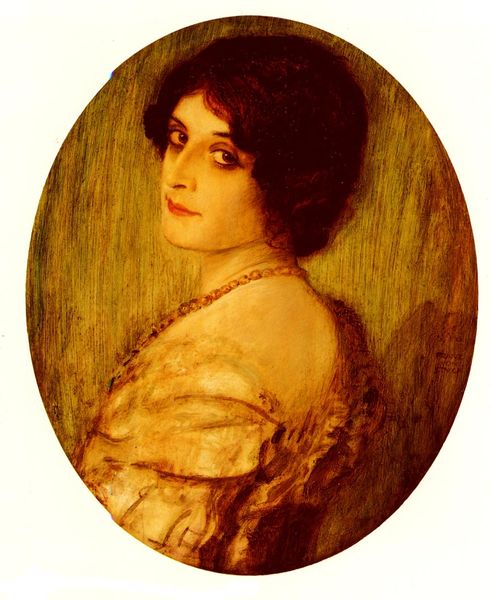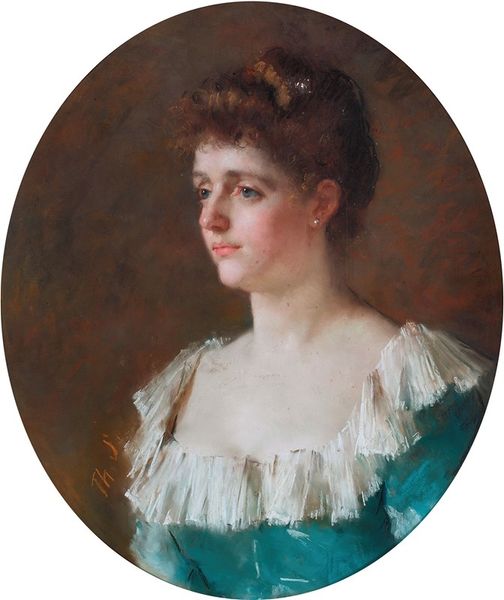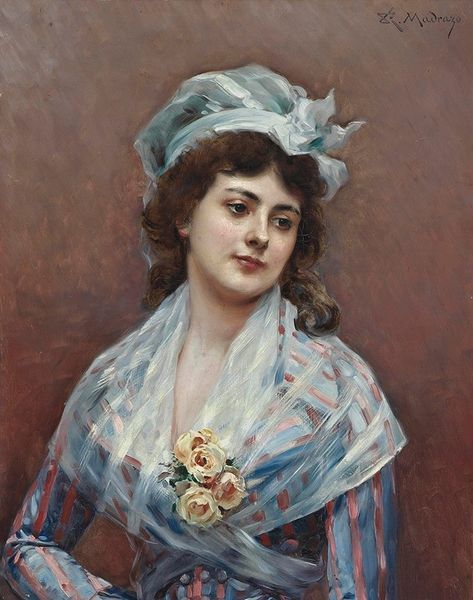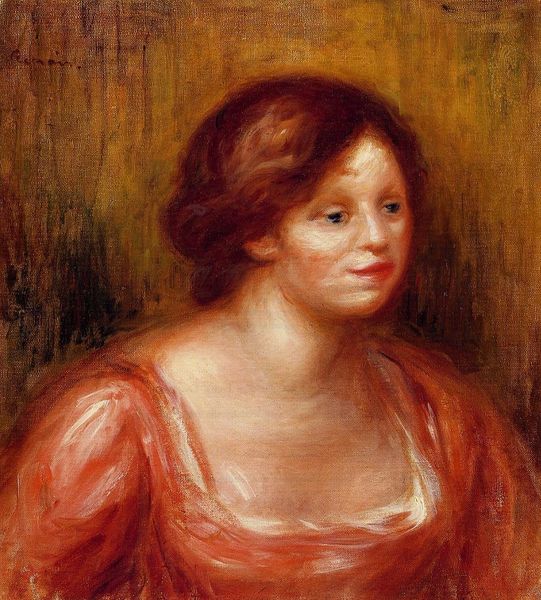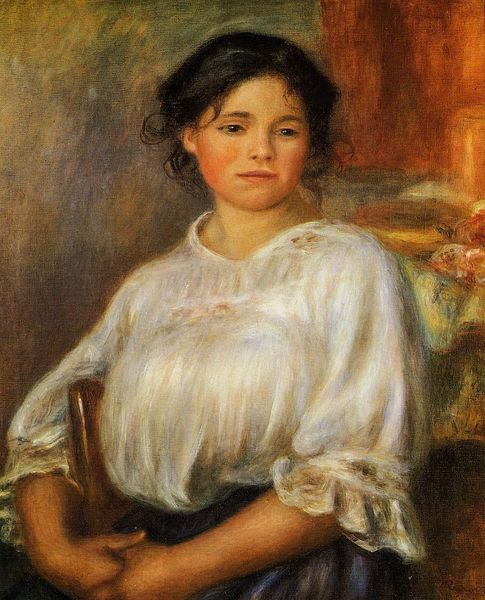
Dimensions: 82.5 x 65.5 cm
Copyright: Public domain
Curator: This is Renoir's "Madame Thurneyssen," painted in 1908. It's an oil on canvas and is currently held in a private collection. What strikes you about it at first glance? Editor: She has a serenity, a quietness. It feels very intimate, almost like we've interrupted a private moment. The brushstrokes are soft, almost caressing. Curator: Intimacy is key here. Renoir, while embedded in Impressionism and Post-Impressionism, really pushes towards intimism in many of his portraits, often focusing on domestic scenes and personal connections. You see this come through in the symbol of the rose, the delicate and demure blush. Editor: Roses have often been interpreted to show love and secrecy in the west, and of course class and stature during Renoir’s time, do you think he would have expected audiences to be looking for signs of those social connections? Curator: Absolutely, class would have certainly been considered and scrutinized in the image, especially for a bourgeois Parisian woman during that time. What is also interesting about this piece is how it contrasts from the time. Renoir depicts the figure within the softness and warmth of these Impressionistic and post-impressionistic modes during an artistic and social environment of stark lines and rigid modes of portraiture from avant-gardists. It reflects his commitment to beauty, even in a world rapidly changing and facing grim prospects during this interwar period. Editor: That's a brilliant point. There's a yearning here, a desire to capture and preserve a fleeting moment of loveliness amidst turbulent times. This also explains her expression. In her stillness, the slight blush almost captures an eternal ideal for an artistic persona for this artist at the time, showing us that even though many things change around us, we should all try to be more Renoir in spirit! Curator: A touching observation. This ability to look backward is, I think, exactly the psychological message that transcends generations through art and culture. Editor: And that, I suppose, is what makes Renoir’s work endlessly relevant and fascinating. Thanks for sharing this moment!
Comments
No comments
Be the first to comment and join the conversation on the ultimate creative platform.
